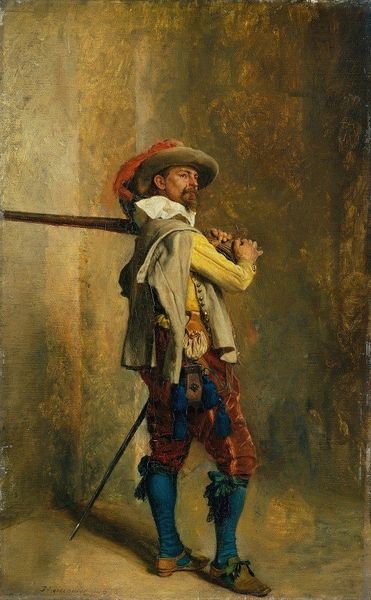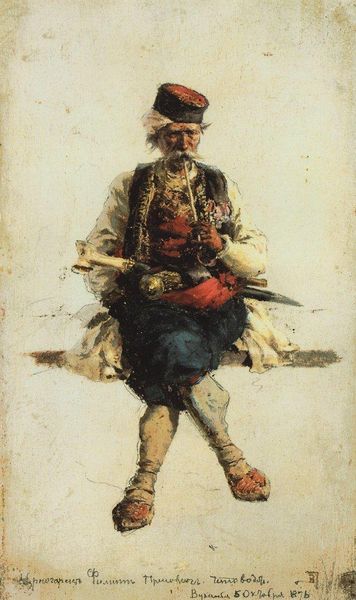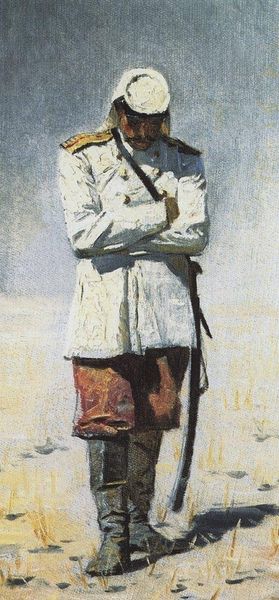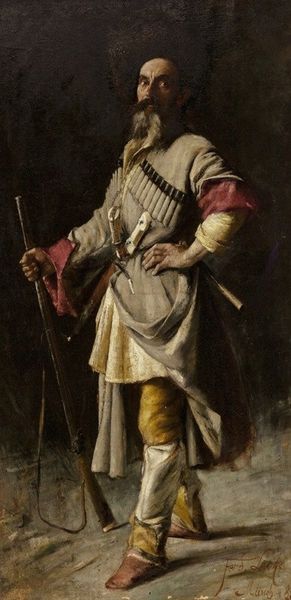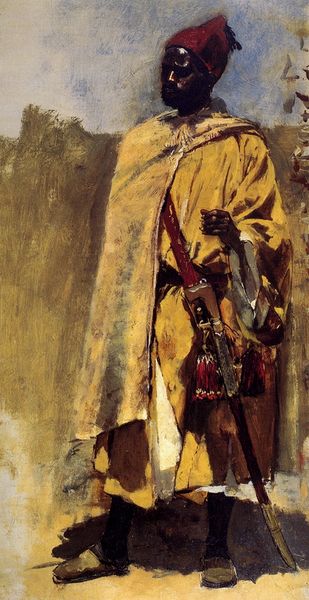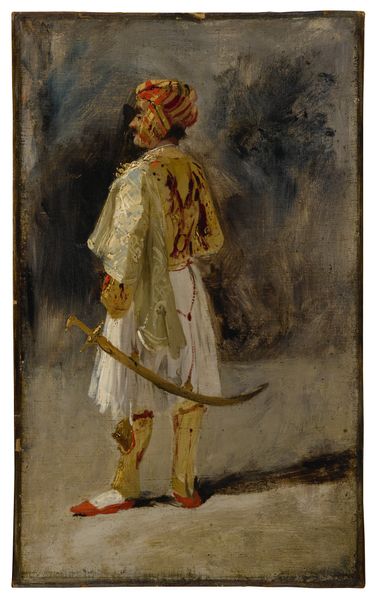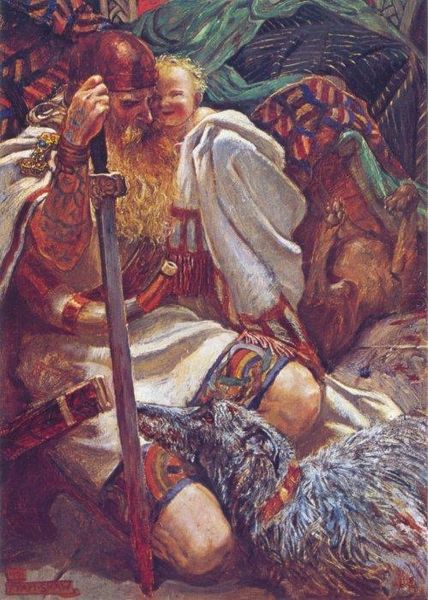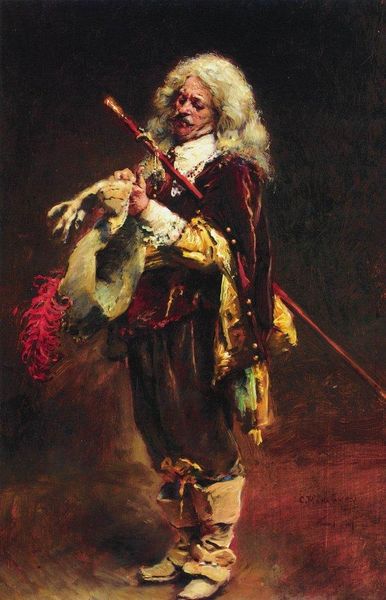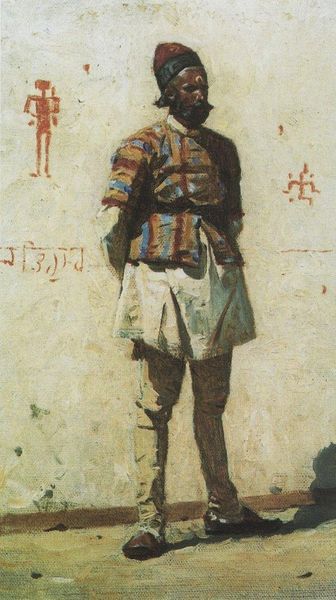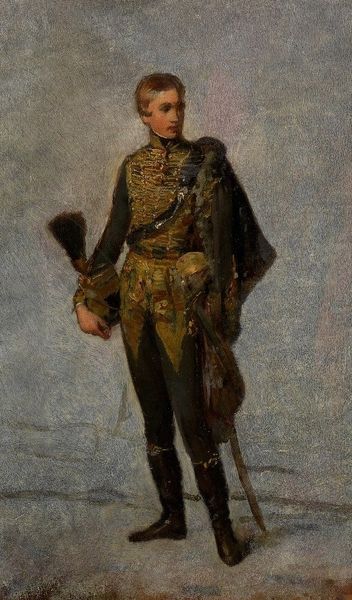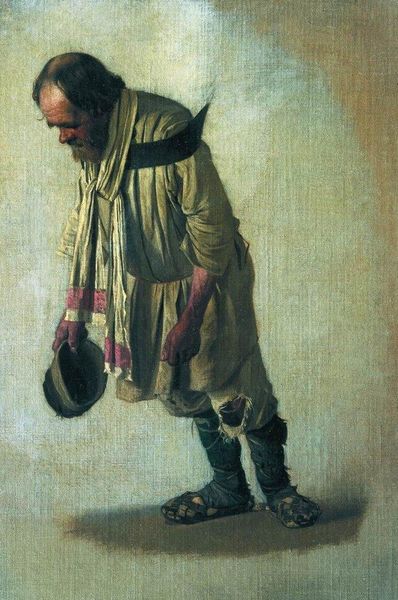
Copyright: Public domain
Editor: This oil painting is “Musketeer,” created around 1880 by Konstantin Egorovich Makovsky. I’m really drawn to the character's expression; he seems both confident and maybe a little melancholy. How do you interpret this work? Curator: It’s tempting to get lost in that romantic image, isn’t it? But I wonder what Makovsky is really saying about power and representation here. This figure, presented in lavish detail, echoes historical narratives that often glorify conquest and dominance. Think about the Musketeer figure as a symbol – who did these figures serve and at whose expense? Editor: That’s interesting; I hadn’t considered that angle. I was mainly focused on the romanticism of the attire and the individual. So you're suggesting that, by depicting this Musketeer, Makovsky may be commenting on broader social structures and historical power dynamics? Curator: Precisely. And consider the context: the late 19th century, a time of burgeoning nationalism and empire. Paintings like this served a purpose, shaping and reinforcing certain narratives. This romanticized vision perhaps obscures more complex and unsettling truths. Where is this character situated? Who is this painting made for? Editor: So, it’s less about celebrating individual heroism and more about examining the ideologies that heroism represents? I see, thinking about this character as less about an individual portrait and more about the structures in the society during the 19th century. Curator: Exactly! Looking beyond the surface allows us to critically engage with the work and its place in history, helping us recognize whose stories get told and how. Editor: I'll never look at a historical portrait the same way again. This makes me appreciate art so much more! Curator: And that's the point, isn't it? To keep questioning, to keep digging.
Comments
No comments
Be the first to comment and join the conversation on the ultimate creative platform.
